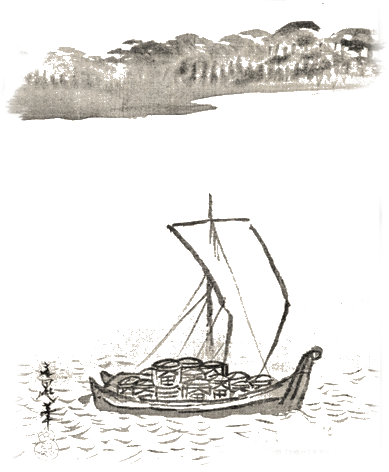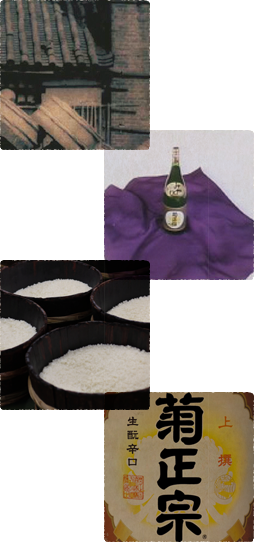
A single thread unites Kiku-Masamune's history since its founding 350 years ago: the resolute and unwavering pursuit of dryness.
Kiku-Masamune Sake Brewing was founded in 1659, when Japan was ruled by Ietsuna, the fourth Tokugawa shogun. The Kano family built a sake brewery at their residence and began large-scale brewing operations. At the time, the Nada region, where they lived, had not yet become well known for its sake, but the subsequent popularity in Tokyo of sake from Osaka and Kyoto, known as kudarizake , led to a rapid surge in demand for sake from the Nada area. Tokyo residents were particularly fond of sake made by the head Kano family, who produced mostly kudarizake. Incidentally, legend has it that the Kano family received its surname from Emperor Go-Daigo after presenting him with sake made from well water from Mikagezawa some 600 years ago.
*Kano means "to receive with joy and compliments."
During the Meiji period, Jiroemon Kano (Shukoo), the eighth head of the family, laid the foundation for today's business by pioneering industry-leading improvements in technology and pursuing a range of initiatives to increase the quality of Kiku-Masamune's sake in the service of the ideal of "doing whatever it takes to create a better sake." He spared no expense in orchestrating this program of improvements, which succeeded in further increasing the quality of the brewery's products. Jiroemon also worked diligently as the founder of the private Nada Junior and Senior High School.
It was during this period that the Kiku-Masamune brand was registered as a trademark. From the Meiji period to the Taisho period, the company laid the groundwork for its subsequent development, for example by increasing overseas exports and serving as a purveyor to the Imperial Household Agency.
That the brewery strived to maintain quality even in the face of the hardships of the tumultuous Showa period is evident in the results of a 1949 public opinion survey conducted in six of Japan's largest cities by an industry newspaper. Kiku-Masamune took top place in three cities and led in the overall results of the poll, which asked respondents to identify the sake brands they preferred to sell and the brands that they believed offered a particularly high level of quality. These results indicate the extent to which sake stores recognized the brand's quality as well as the popularity it had earned.
What was it about the quality of Kiku-Masamune sake that earned the approval of professionals in this way? One answer to this question revolves around the brand's single-minded pursuit of dryness. Customers simply do not tire of drinking dry Japanese sake that has been brewed using the same Kimoto method since the Edo period by Kiku-Masamune's master brewers, who have taken great pride in honoring the brand's tradition of brewing only dry sake. Going forward, Kiku-Masamune remains committed to this single-minded pursuit of dryness.

